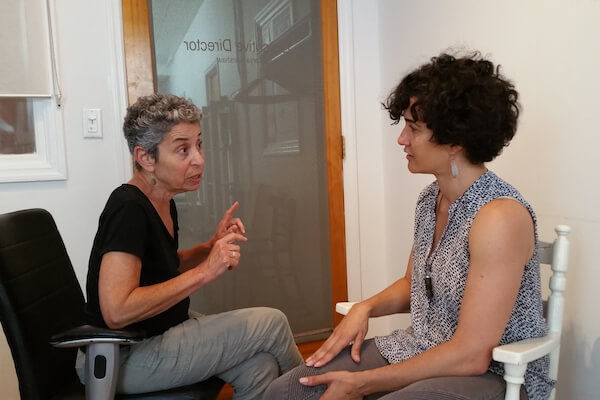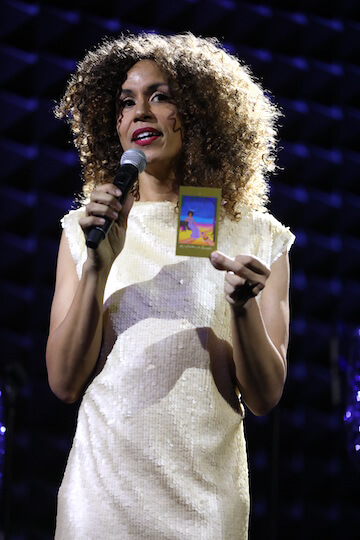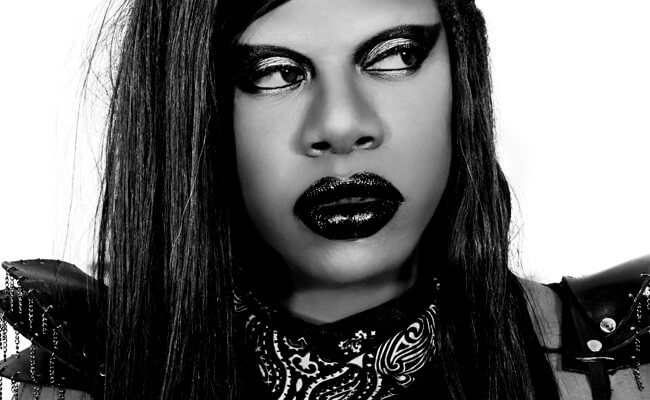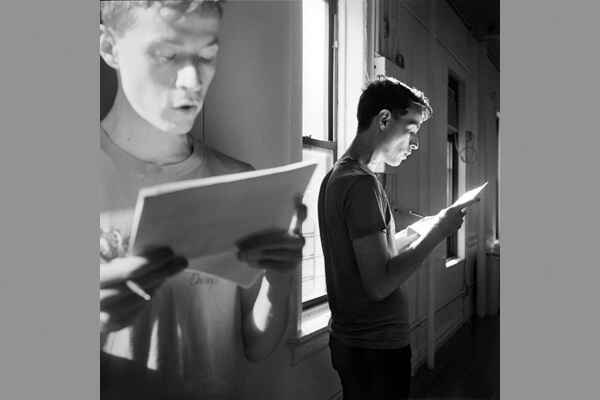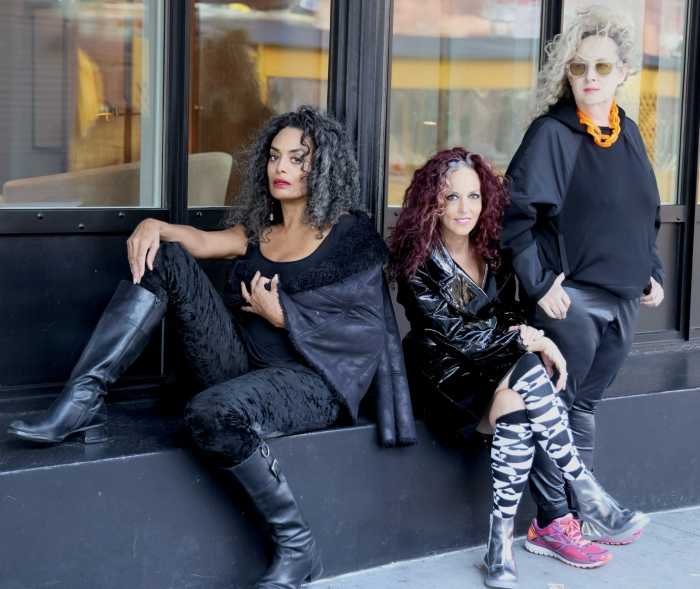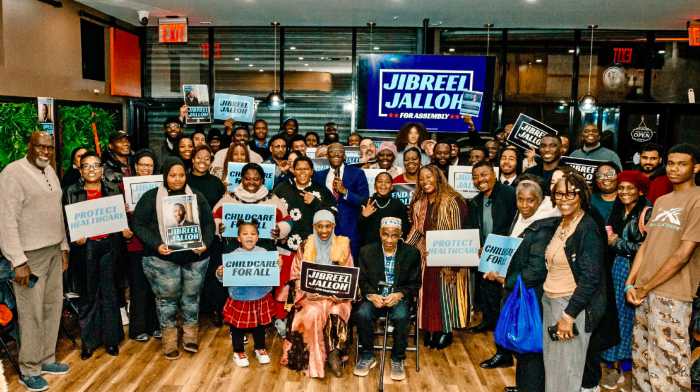Tanisha Christie’s residency will focus on the development of the “Bathtub” project, a new work featuring intimate audience participation. | JD URBAN
Brooklyn Arts Exchange, familiarly known as BAX, was started 25 years ago by director Marya Warshaw with a dream that there could be a haven in Brooklyn for all artists at every stage of their development. From its humble beginnings on Douglass Street, BAX has grown into a two-story arts center on Fifth Avenue in Park Slope where students starting at age three can learn from some of the most accomplished working theater and dance artists in New York, while all around them groundbreaking works are under development.
BAX may not share in the glory of world premieres, but its diaspora of artists is renowned. It has become a leading incubator for professional dance, theater, and performance artists to develop their work — and was recognized in February with funding from the Doris Duke Charitable Foundation. That funding will be used to support inclusive programming initiatives like the Submerge series, which celebrates the artistic voices of queer and trans people of color.
Diversity doesn’t just happen.
“At the forefront of the BAX mission is the discussion about the things that impact the daily lives of people and artists, starting with inclusiveness — whether about gender, race, or age,” Warshaw told Gay City News.
A generation of hope and change at BAX, the Brooklyn Arts Exchange
This is part of the reason that artists Katy Pyle, director of Ballez, Paloma McGregor, director of Dancing While Black, Dan Fishback, director of the Helix Queer Performance Network, and so many others have found a home and a place to develop their work at BAX.
“I don’t think it’s accidental,” said Warshaw. “I’m a lesbian.”
In a way, BAX has become a de facto home for LGBTQ artists and artists of color through the Helix performance series, which is specific to queer artists, and the artist-in-residence program. Faye Driscoll developed her award-winning autobiographical piece “837 Venice Boulevard” here. Aurin Squire “discovered” his queer voice developing “The Gospel According to F#ggots” in the last residencey cycle. Dan Fishback started his two-year BAX residency in 2010, and as he told Gay City News, “I basically never left.”
Tanisha Christie’s “Bathtub” project. |JD URBAN
He explained, “The work I first made there had to do with the legacy of early AIDS and the generation gap between older and younger queer folks. Marya engaged so rigorously in that work, and when I stayed at BAX after my residency to teach queer performance workshops based on community history, it was all emerging from that dialogue with her. Those conversations eventually developed into the founding of the Helix Queer Performance Network — our collaboration with La MaMa and the Hemispheric Institute.”
Fishback added, “In working with Marya, I'm consistently challenged to be authentic, to grapple with reality, to get beyond bullshit, and to honor basic core values of artistic expression, justice, and equity. Through her leadership, BAX is a place where those values come first, even when standard arts administration logic would encourage a less humanistic way of thinking. And this is why people feel so comfortable at BAX, and why the Artist in Residence program has become such a sought-after prize — because BAX has rightfully developed a reputation as a place where artists are treated holistically as full human beings, not just content-generators or walking careers.”
The Artist in Residence program does not exclusively support LGBT artists, “but the representation of queer artists and queer artists of color is a thoughtful and intentional indication of our objectives,” Warshaw explained. “At least half at any given time are — and also specifically involved deeply with work that reflects on that.”
The current roster of Artists in Residence include Ni’Ja Whitson, who is in their second year working on what Warshaw calls “a striking meditation that reflects on Marlon Riggs’ ‘Tongues Untied’ that examines black queer identity past and present and also ideas of gender fluidity.”
Another artist entering her second year residency is writer, thinker, and maker Marissa Perel.
“The work she’s been doing this year reflected on disability and AIDS on the 25th anniversary of the Americans With Disabilities Act,” Warshaw said, “and she will continue to work in the coming year.”
Among the first time artists in residence this cycle is theater artist Tanisha Christie, whose artistic team for her “Bathtub” project includes the amazing Deb O, JD Urban, Liz Lerman, and Daniel Alexander Jones, among others.
Christie may be better known as a media artist, particularly for the film “Walk With Me,” co-created with Ellie Walton. But she has continually asked the question “Where’s the body in this form?” in her own works. Her performance-based film “Flag Body” was a meditation on patriotism and blackness in the wake of 9/11. The “Bathtub” project will be a live performance, and brings the body up close and into personal space.
“I saw a video of Michael Brown’s mother reacting to the verdict [in the trial of police office Darren Wilson] and was saddened, angered, and horrified by the comments of the trolls underneath,” Christie told Gay City News. “Bad things are happening to brown, black, LGBTQ bodies. We’re in trouble in this society, and that was pre-Trump.”
In response to what she saw on media, on social media, she started taking baths and sobbing.
Marya Warshaw, founding director of BAX, and Paloma McGregor, director of Dancing While Black. | FRAN KIRMSER
“Being black, being a woman — we are under assault,” she affirmed. “I want to take a bath with people, literally and figuratively, and blend in some of those social media conversations. I want them to have to deal with my black, middle-aged nakedness. It started out as a piece about me, but it’s evolved; it’s meant to be a collective kind of experience.”
The residency will provide Christie with the resources to embark on “a series of explorations” that will be presented in six separate showings over the course of the year.
These are the kinds of works that are made possible in the brave and progressive community space that is BAX — where gender-neutral bathrooms were established more than 10 years ago.
“We need to raise a generation of people who are unafraid to question, to think, and to create boldly… citizens of the world who aren’t afraid to ask tough questions about race, class, gender, identity, justice, and the status quo,” Warshaw asserted. “And we need them to do so with understanding, with complexity, with openness, and with love. That is what drives us all at BAX.”
For complete information on classes, events, artist services, and other programs, go to bax.org.

